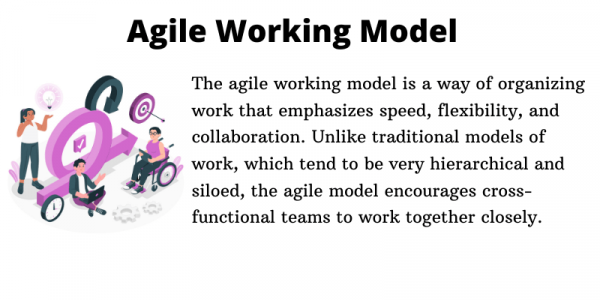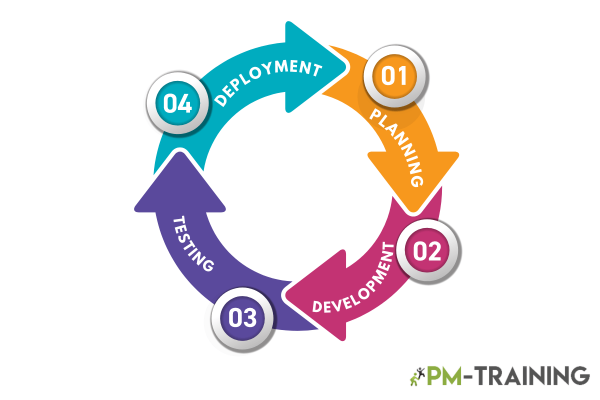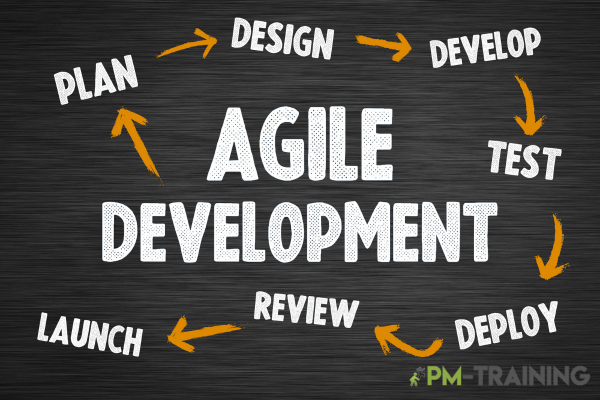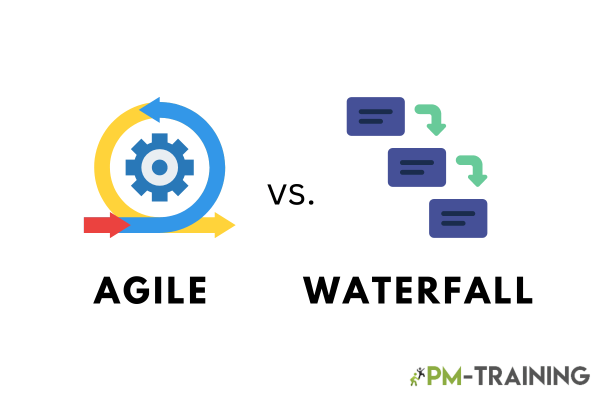More businesses have shifted to the agile way of working. Not only is it a modern way of doing project management, but rather it is a more flexible project management methodology that allows for many changes.
The agile working model is a type of project management designed to be flexible and adaptable. It means that the project can be changed as needed to meet the customer or client’s needs.
The agile working model is divided into four phases: planning, development, testing, and deployment. In this blog, we try to understand the critical aspects of the Agile working Model.
The agile working model is a way of organizing work that emphasizes speed, flexibility, and collaboration. Unlike traditional models of work, which tend to be very hierarchical and siloed, the agile model encourages cross-functional teams to work together closely.
This model is often used in software development but can be applied to any work. One of the Agile model’s key benefits is that it helps reduce the risk of problems or errors. By working in smaller, more focused teams, there is less chance for things to fall through the cracks.
In addition, the agile model helps to promote creativity and innovation by giving team members the freedom to experiment and take risks. As a result, the Agile model is increasingly being adopted by organizations across various industries.

What are the Phases of the Agile Working Model?
Planning phase
The planning phase is essential because it sets the foundation for the rest of the project. The planning phase is where the project manager works with the team to determine the project’s objectives. It is also where the project manager creates a timeline for the project and assigns tasks to each team member.
Development phase
The development phase is where the team starts working on the project. It is where they will write code, create prototypes, and test their work. The development phase can be divided into two parts: sprints and iterations.
Sprints are shorter periods (usually two weeks) where the team focuses on a specific task. Iterations are extended periods (usually four weeks) where the team works on multiple charges.
Testing phase
The testing phase is where the team tests their work to ensure it meets the project’s objectives. It is done by creating test cases and running them against the software.
The testing phase can be divided into two parts: unit testing and integration testing. Unit testing is when each component of the software is tested. Integration testing is when all of the components are tested together.
Deployment phase
The deployment phase is when the software is actually deployed to production. It includes installing it on servers, configuring it, and ensuring it is accessible to users. The deployment phase can be divided into two parts: staging and production.
Staging is when the software is installed on a server that only a few people can access. Production is when the software is installed on a server everyone can access.

The Agile Model Diagram
Requirements
The first step in the agile model is to determine the requirements of the customer or client. It is typically done through a process of gathering information and analyzing the needs of the customer.
Once the requirements have been determined, you can create a product backlog, which is a list of all the features that need to be implemented to meet the customer’s needs. The product backlog is then used to populate the sprint backlog, a list of tasks that need to be completed to implement a particular feature.
The development team then uses the sprint backlog to create working software during each sprint. Finally, the software is delivered to the customer or client once all the features have been implemented.
Design
Design is an essential part of the agile process and should be noticed. The design phase is where the project team creates a product vision, determines the project’s scope, and creates a high-level plan. During this phase, the team will establish any risks or dependencies that could impact the project.
Once the design is complete, the team will clearly understand what needs to be done and can begin to create a more detailed plan. A well-designed project will be easier to execute and more likely to succeed.
Develop
Designers and developers work together in the development phase to create the product. In addition, the product is integrated with other systems to ensure compatibility.
Test
The agile model diagram test phase is vital for ensuring that the product meets quality standards. This phase includes both manual and automated testing. Manual testing is conducted by a human tester and can be used to identify errors that may not be detectable by automated tests.
On the other hand, automated tests run by software can more accurately identify bugs and errors. In addition to identifying errors, the test phase also helps to ensure that the product meets customer requirements. The team can be confident that they are delivering a high-quality product by conducting thorough testing.

Deploy
One of the final steps in the agile model is the deployment phase. It includes deploying the product to a test environment or production environment. Depending on the testing results, some final adjustments may be made to the product before it is ready for release.
Once the product is deployed, monitoring its performance and addressing any issues is essential. The agile model provides a flexible framework for developing and delivering software products, and the deployment phase is a crucial part of the process.
Review
The review phase of the agile model is critical to ensure that the product is ready for release. The review phase is vital to the success of the product. This phase includes end-user testing and management reviews.
End-user testing ensures that the product meets the needs of the customer. Management review ensures that the product is on schedule and within budget. This phase also allows for feedback from customers and stakeholders.
Agile Model vs. Waterfall model
In project management, there are different approaches you can take. Two of the most popular methodology frameworks are the agile and waterfall models. As the names suggest, these two approaches differ in how they view and manage the progress of a project.
The agile model is all about flexibility and responding to change. This approach values collaboration and encourages constant communication between team members. The goal is to deliver working software as quickly as possible, and projects are typically broken down into small, manageable sprints.

In contrast, the waterfall model takes a more linear approach. This framework follows a set of rules which sequentially have to be respected. Projects are planned out in advance in great detail, and team members typically have specific roles and responsibilities. The focus is on delivering a finished product that meets all the requirements.
Both agile and waterfall have their strengths and weaknesses, and which one you choose will ultimately depend on the nature of your project. Agile is the better option if you need to respond quickly to changes. However, if you need to plan everything out in advance, then waterfall may be a better fit.
Agile working models are flexible, adaptable, and divided into four phases: planning, development, testing, and deployment. Each phase has specific tasks that need to be completed for the project to be successful.
Project managers should understand how each phase works to create a timeline and assign tasks accordingly.
